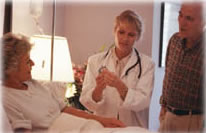


   |
Seborrhea - Seborrheic Dermatitis - Treatment and Symptoms
Definition Seborrheic dermatitis is a common, inflammatory skin condition that causes flaky, white to yellowish scales to form on oily areas such as the scalp or inside the ear. It can occur with or without reddened skin. This dermatitis is linked to Malassezia, immunologic abnormalities, and activation of complement. It is commonly aggravated by changes in humidity, changes in seasons, trauma or emotional stress. The severity varies from mild dandruff to exfoliative erythroderma. Seborrheic dermatitis may worsen in Parkinson disease and in AIDS. Commonly seen on the scalp, sides of the nose, eyebrows, eyelids, skin behind the ears, and middle of the chest. Other areas, such as the navel (belly button), buttocks, skin folds under the arms, axillary regions, breasts, and groin, may also be involved. Cradle cap is the term used when seborrheic dermatitis affects the scalp of infants. In adolescents and adults, it is commonly called dandruff. Causes
Symptoms
Treatment
| |
Online Doctor || Teeth Care || Contact Us || Diabetes Care || Cellulite Guide || Chemotherapy || Acne Products ||
|
|
(c) Online-family-doctor.com All rights reserved
Disclaimer: Online-family-doctor.com is an information and educational purposes web site only. It is not intended to treat, diagnose, cure, or prevent any disease. Do not rely upon any of the information provided on this site for medical diagnosis or treatment. Please consult your primary health care provider about any personal health concerns. We will not be liable for any complications, or other medical accidents arising from the use of any information on this site.